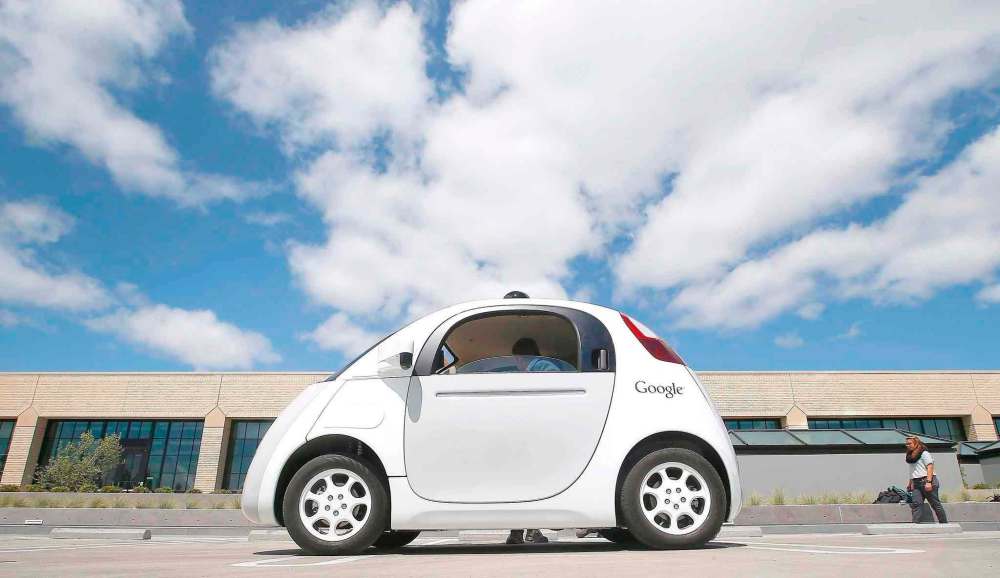Councillor urges city to step on the gas, prepare for driverless vehicles
Advertisement
Read this article for free:
or
Already have an account? Log in here »
To continue reading, please subscribe:
Monthly Digital Subscription
$19 $0 for the first 4 weeks*
- Enjoy unlimited reading on winnipegfreepress.com
- Read the E-Edition, our digital replica newspaper
- Access News Break, our award-winning app
- Play interactive puzzles
*No charge for 4 weeks then billed as $19 every four weeks (new subscribers and qualified returning subscribers only). Cancel anytime.
Read unlimited articles for free today:
or
Already have an account? Log in here »
Hey there, time traveller!
This article was published 25/07/2016 (2824 days ago), so information in it may no longer be current.
A city councillor wants bureaucrats to press the pedal to the metal and explore the ramifications of self-driving vehicles before they hit Winnipeg streets.
But the province’s largest driving club wants to hit the brakes and switch on its four-way flashers because of the conditions the vehicles will face here.
Coun. Matt Allard (St. Boniface) says self-driving vehicle studies are underway in Calgary, Toronto and Vancouver and he doesn’t want Winnipeg to be left behind.

“It sounds like science fiction, but it will be happening and happening very soon,” Allard said Tuesday.
“I read that by 2020 these cars are expected to be on the market. It will be happening soon and we’re making transportation decisions for the next 30 to 40 years.”
Allard said the evolving technology will affect people working across the entire transportation industry, including truck drivers, bus operators and cabbies. He said in addition to making travel safer, experts predict the technology will be able to move five times the current traffic volume on the same road infrastructure.
“The more I research the more I realize the tremendous challenges,” he said. “Many municipalities rely on traffic enforcement as revenue, but the implications on this will be tremendous.”
Allard’s motion, which asks city departments to examine the effects on transportation and traffic planning, land use planning, parking and land development, will go to this week’s Riel community committee, where it is expected to be referred to the city’s executive policy committee after the summer break.
Erika Miller, a spokeswoman for CAA Manitoba, said a national poll taken from March 23 to 30 found only nine per cent of Manitobans would trust a car to drive itself.
Miller said that put Manitobans well below the national average of 19 per cent not trusting a self-driving car. The survey, of 2,090 representative Canadians, has a margin of error of plus or minus 2.2 per cent 19 times out of 20.
“According to our research, Manitobans have major concerns about driverless cars, including accountability in the event of an accident, vehicle hacking and the loss of driving-based jobs,” she said.
And Miller said CAA has concerns about Winnipeg’s roads, including the fact they are ice- and snow-covered for several months each year.
“Old or poorly maintained infrastructure impacts human drivers every day and we know it impacts automated vehicles,” she said.
“The Tesla Model X requires visible road markings to stay in its lane — something which Winnipeg often lacks because of wear and tear and weather. The budgetary impact of increased snow clearing in the winter, in order for driverless vehicles to properly navigate the roads and highways, is something that should seriously be considered.
“While we believe it’s always a good idea to look ahead to the future, we certainly can’t lose sight of the road safety and infrastructure issues that need to be improved today.”
Manitoba Public Insurance spokesman Brian Smiley said there are growing numberts of new vehicles equipped with computer-assisted safety features such as blind-spot detection, lane-departure warning and automatic braking on the province’s roads now, but none take humans out of the equation.
“Drivers of these vehicles are expected to be in full compliance with laws (and the) Highway Traffic Act,” he said.
kevin.rollason@freepress.mb.ca

Kevin Rollason
Reporter
Kevin Rollason is one of the more versatile reporters at the Winnipeg Free Press. Whether it is covering city hall, the law courts, or general reporting, Rollason can be counted on to not only answer the 5 Ws — Who, What, When, Where and Why — but to do it in an interesting and accessible way for readers.
History
Updated on Tuesday, July 26, 2016 12:24 PM CDT: Added related items.
Updated on Tuesday, July 26, 2016 5:26 PM CDT: story updated




